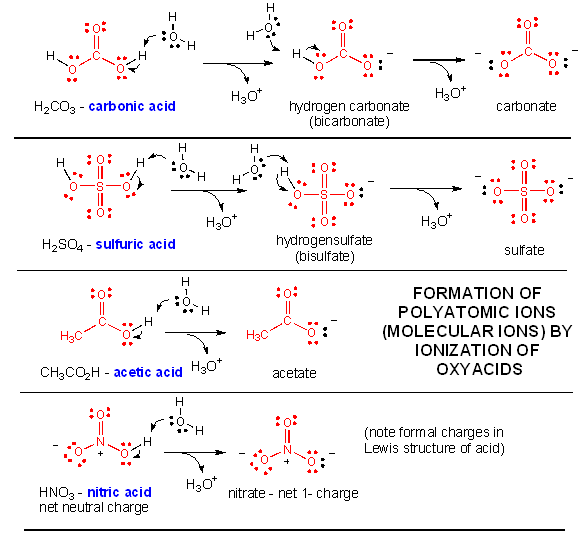This demo will convert a skeletal figure, provided by a drawing in the HTML5 SketcherCanvas component on the left, into a Lewis Dot Structure in the Canvas on the right. When you are finished drawing your 2D structure, click on the Get Lewis Dot Structure button to see the result. This feature is customizable with publication quality graphics output in ChemDoodle 2D. How do we draw a covalent Lewis Dot Structure? Level 1 (basic) 1. Add up all the valance electrons of the atoms involved. Ex CF 4 So C has 4 and F has 7 (x4 we have 4Fs) = 32 valence electrons. You need to pick the central atom. This is usually easy, this atom will be surrounded by the others. So C will be surrounded by F's. To generate the Lewis dot structure, you have to follow the given steps: Find the total count of valence electrons to molecules. In this step, add the total count of valence electrons from all the atoms in a bit. Find the required count of electrons needed to make the atoms complete.
- Chemistry Lewis Dot Structure Practice
- Chemistry Lewis Structure
- Lewis Dot Structure Chemistry Worksheet
- Lewis Structure Calculator
- Chemistry Lewis Dot Structure Calculator Worksheet
- Chemistry Lewis Dot Structure Calculator Free
| Molecular Structure Calculations |
Colby Chemistry, Paul J. Schupf Computational Chemistry Lab
The simple theories of bonding that we learn in General Chemistry are powerfuland useful. These theories, which include Lewis structures, VSEPR, andhybridization, are simple models that help predict chemicalproperties. However, Lewis dot structures and hybridization are approximationsthat may or may not match reality. We should verify the usefulness of oursimple predictions with molecular orbital theory. If thetheoretical calculations are done carefully, we can learn a lot about chemical structure by comparing our Lewis structures and hybridizationarguments with the molecular orbitals.The calculations in this database includebond lengths, angles, atomic charges, the dipole moment,bond orders, and molecular orbital energies. The best Lewis structure thatfits the molecular orbitals is also calculated, so you can directlycompare with your predictions. This best Lewis structure is presented withformal electron pair localized bonds and the hybridization of the atomicorbitals used to form these localized bonds. The Chime plugin is neededto see the 3-D structure of the molecules in these pages. See thelink at the bottom of the page for the Chime plugin.
Molecular orbital theory is based on approximations also. These calculationsare done with some of the best available calculation methods (DFT forgeometry and molecular orbital energies and ab initio for properties).We use Alain St-Amant's DeFT program (University of Ottawa).
Open pcb file online. The Molecular Structure Input Form, see below, will allow you to do calculationsfor molecules not in the database.These calculations take time; 1-2 hours in some cases.
You can use the Formula Search page or browse the links below. As of 07/12/05 there are 1056structures in the database.
A Best Lewis Structure and Donor Acceptor Interactions Tutorialis available to help you interpret those output sections. These Lewisstructure calculations are done using NBO Analysis.
Answer some Study Questions to help your understanding of some interesting chemistry.
Example Molecular Orbital Results
LiHLiFLiClLiOHLiCNLiBrC2N2NOO2COF2Many More Diatomic molecules and ions
H3+Li2OBeH2BeCl2diboraneBH3BH2CNBH2SH
BF3BF32-BF4+BF2O-BCl3BH3NH3BH3COBH3PH3BO2NO
C3C5H2OH3O+H4O+O3O4CO2OCScyclic CO2CO2-HCO+HOC+
N3 radicalN3 quartetHN3N3-NCOHNCNHCNNO
NO2NO2+NO2-HOONNOO-NO2- triplet NO22+NO3-NO3-triplet NO2O-
N2Ocyclic N2Ocyclic N2O2N2O4NO2NO
ONOOHN2H2N2H2 tripletH2NNH2NN tripletNH2FNHF2NF3NF4-N2F2N2F4BNHF
HNCl+NH2ClN3ClNCl2NCl3NOClONClNClOClNO2ClNOOt-ClONOOCl2
OF2FOO•FOOFFNO2FOONF3-Cl3-Cl3FClF2+
AlH3AlF3AlCl3Al2Cl6
SiH4SiH3SiH3SiO2
P2PCl3SO2SO3SO3-SOCl2SO2Cl2ClO2ClOOClO2+ClO2-ClOO-
FClOFClO2K2O
Many More Binary Hydrides and their Anions, Cations, and Radicals
Many More Triatomic molecules and their Anions, Cations, and Radicals
Many More Period 3 Compounds, Al, Si, P, S, and Cl
Many More Period 4 Compounds, Ga, Ge, As, Se, and Br
Vlc player for mac gezginler pc. Devices and Mac OS X version VLC media player requires Mac OS X 10.7.5 or later. It runs on any 64bit Intel-based Mac. Previous devices are supported by older releases. VLC Media Player is an Open Source Multimedia Player licensed with GPL that allows you to view videos and listen to audios in practically any format. VLC Media Player can play any video or audio format, including MPEG, WMV, AVI, MOV, MP4, MKV, H.264/AVC, FLV, MP3 and OGG, along with many others. VLC for Mac OS X VLC is a free and open source cross-platform multimedia player and framework that plays most multimedia files as well as DVDs, Audio CDs, VCDs, and various streaming protocols.
Acids
Onium Ions:NH4+NH3F+NH3Cl+H3O+H3O2+H2F+PH4+H3S+H2Cl+H2CN+Hydrides:HFHClHCNHCN tripletHNCHNCOHOCNHONCHCNOHNCSHSCNHN3
H2N2H2N=NN2H4H2O2P2H4H2SH2S2
Oxyacids:H2CO3HONHNOHNO2HNO3H2O2HOFHOCl
HClO3HClO4H3PO2H3PO3H3PO4HSOHH2SO3H2SO4
Anions
Hydride Conjugates:F-Cl-OH-CN-NCO-CNO-NCS-CNS-NSC-N3-HN2-N2H3-HOO-P2H3-HS-
Oxyanions:HCO3-CO32-CO3OH-CO3O2-NO-NO2-NO3-HO2-O22-OF-OCl-ClO2-
ClO3-ClO4-H2PO2-H2PO3-H2PO4-HPO42-PO43-HOS-HSO-
HSO3-SO32-HSO4-SO42-S2O32-
Many MoreHydroxyl Compounds, Donor-Acceptor Oxides, Oxyacids, and Anions
Many MoreFormally Double Bonded Hydroxyl Compounds, Donor-Acceptor Oxides, and Oxyacids (e.g.Carbonic and Nitric acid)
Organics
ethaneethyleneacetyleneH2C=C, vinylidenemethanolformaldehydeformic acidmethylamineCF3Cl
Many More Carbon Compounds, Organics, and Organic Reagents
Many MoreOrganic Radical Cations, Neutral Radicals, Cations, and Anions
Oxides
NH3->OCH3NH2->OCH2NH->OCH3OH->OCH2O->OCH2O->O tripletH2N2->OPH3->OCH3PH2->OH2S->OCH3SH->OCH

Reactive Intermediates
OH radicalHOO radicalH2O2+ radicalHCO3 radicalCO3- radical CO3OH-CO3O2-peroxodicarbonate dianion, OChemistry Lewis Dot Structure Practice
2COOCO22-methylene singlet (CH2)methylene triplet (CH2)methyl radical (CH3)CH3+
ethyl radical (CH3CH2)CH3CH2+ethylene tripletcyclopropane radicalHCC•HCC-
CH3NH-CH3OH+CH3OH2+CH3O-CH3O radicalCH2OH+CH3CO+CH2CHO-
CF2 singletCF2 tripletCF3•CF3+CCl2 singletCCl2 triplet
CHCl singletCHCl tripletCHBr singletCHBr triplet
H2CF+CH2Cl+CH2Cl-trans-C2H4Cl2+Cl2C=C singlet
allyl+allyl radicalallyl-allylalcoholradicalallylchloride radical1-chloropropane radical
HCONH-N3 radicalN33+ singlet N33+ triplet N2H+
Hydrogen Bonded and Neutral Complexes
H2O dimerNH3 dimerHF..waterHF..NH3HCl..NH3H2O..H2SH2S..H2OSO2..H2OH2O..formaldehydeHCN..formaldehydeHCN..H2CCwater..COwater..HPO2CO2..H2CO2..CO2
CO2..waterH2O..SO3H

Chemistry Lewis Structure
2S..SO3PCl3..Cl2Cl2..Cl2CH3radical..H2H2O..Cl•Ion-Molecule Complexes
Li+.H2OLi+.(H2O)2BeCl22+water..superoxide-

Reactive Intermediates
OH radicalHOO radicalH2O2+ radicalHCO3 radicalCO3- radical CO3OH-CO3O2-peroxodicarbonate dianion, OChemistry Lewis Dot Structure Practice
2COOCO22-methylene singlet (CH2)methylene triplet (CH2)methyl radical (CH3)CH3+
ethyl radical (CH3CH2)CH3CH2+ethylene tripletcyclopropane radicalHCC•HCC-
CH3NH-CH3OH+CH3OH2+CH3O-CH3O radicalCH2OH+CH3CO+CH2CHO-
CF2 singletCF2 tripletCF3•CF3+CCl2 singletCCl2 triplet
CHCl singletCHCl tripletCHBr singletCHBr triplet
H2CF+CH2Cl+CH2Cl-trans-C2H4Cl2+Cl2C=C singlet
allyl+allyl radicalallyl-allylalcoholradicalallylchloride radical1-chloropropane radical
HCONH-N3 radicalN33+ singlet N33+ triplet N2H+
Hydrogen Bonded and Neutral Complexes
H2O dimerNH3 dimerHF..waterHF..NH3HCl..NH3H2O..H2SH2S..H2OSO2..H2OH2O..formaldehydeHCN..formaldehydeHCN..H2CCwater..COwater..HPO2CO2..H2CO2..CO2
CO2..waterH2O..SO3H
Chemistry Lewis Structure
2S..SO3PCl3..Cl2Cl2..Cl2CH3radical..H2H2O..Cl•Ion-Molecule Complexes
Li+.H2OLi+.(H2O)2BeCl22+water..superoxide-Be2+..H2C=CH2 unsymmetricalBe2+..H2C=CH2 symmetricalBe+..H2C=CH2 unsymmetricalBe+..H2C=CH2 symmetrical
FHF-CO2F-H2..OH-water..HCONH-O3..Br-
H3O+..H2OH3O+..CO2H3O+..N2H3O+..HO•NO+..H2ONO+..N2NO+..O2
Atomic and Ionic Energies
Lewis Dot Structure Chemistry Worksheet
atomic energiescation energiesanion energiesWeird, Wacky, High Energy Structures
HCl-H3ClCH42+COH2CH2.HClCH3OHCH+HNCO-cyclicC4N2CO2O2-CO22-Lewis Structure Calculator
BH4+AlH4+FClPClPF4+F-ClF4-Go to the
Molecular Structure Input Form
Chemistry Lewis Dot Structure Calculator Worksheet
Get your
Results Here
Pmd file not opening. SRC='http://www.colby.edu/chemistry/OChem/buttons.dir/chime.GIF'ALIGN='BOTTOM'>
